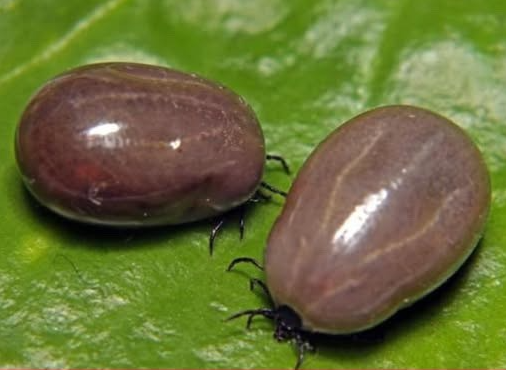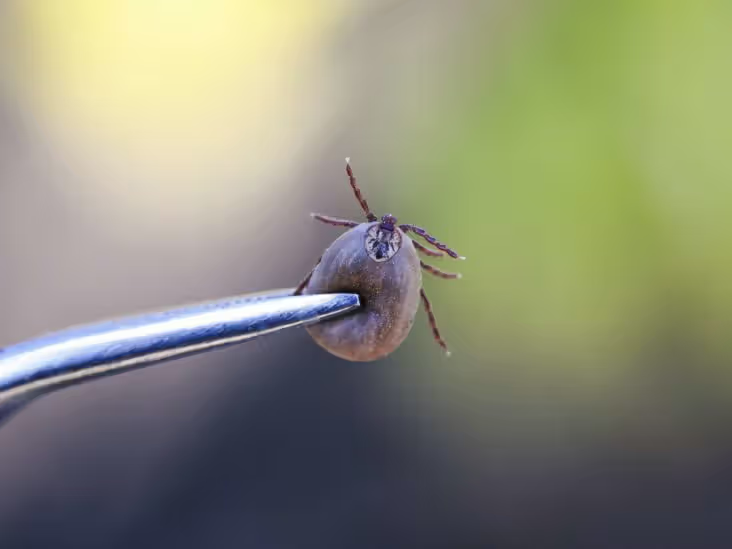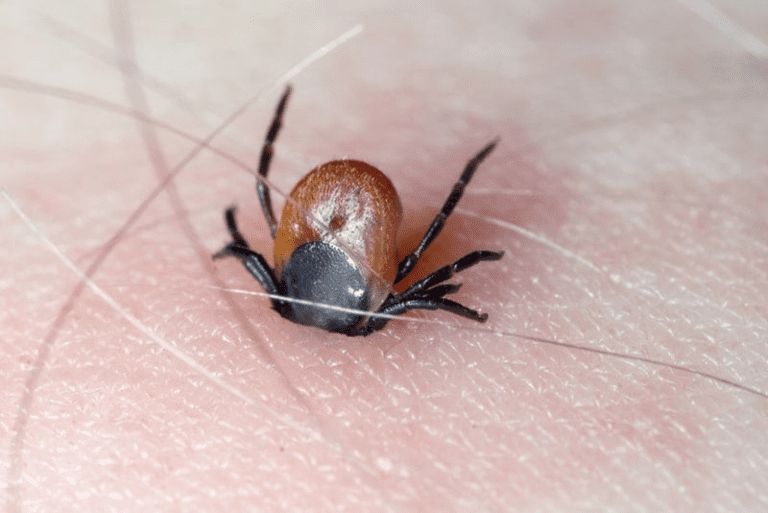Ticks are more than just pesky parasites—they pose significant health risks by spreading dangerous diseases like Lyme disease and Rocky Mountain spotted fever. Many people, after removing a tick, instinctively flush it down the toilet, thinking it’s an easy and foolproof method of disposal. But does this actually eliminate the tick for good? Let’s dive into the fascinating resilience of ticks, explore whether flushing works, and discuss safer alternatives.
Understanding Ticks: Resilient Parasites That Thrive in Tough Conditions

Ticks are tiny but formidable parasites that feed on the blood of humans and animals. Found in grassy, wooded, and damp areas, they can attach to their hosts unnoticed, transmitting harmful bacteria and viruses. There are two primary types of ticks:
- Hard Ticks (Ixodidae): These ticks have tough exoskeletons, allowing them to survive harsh conditions for months without feeding.
- Soft Ticks (Argasidae): Softer and rounder in shape, these ticks feed more frequently to sustain themselves.
Ticks are incredibly resilient. They can withstand extreme temperatures, go without a meal for extended periods, and even survive water exposure for surprising lengths of time. This tenacity begs the question: can a toilet flush really get rid of them?
Can Ticks Survive a Toilet Flush?
Flushing a tick may seem like the easiest way to dispose of it, but their survival depends on several factors:
- Water Temperature: Toilet water is often cooler than a tick’s natural environment, which can slow its metabolism and leave it vulnerable to death. However, cold water alone is rarely enough to guarantee their demise.
- Submersion Duration: Ticks breathe through spiracles—tiny openings on their bodies. While they can survive temporary submersion, prolonged exposure to water can eventually suffocate them.
- Force of the Flush: The swirling water of a toilet flush can dislodge and damage a tick, but their small size and ability to cling to surfaces mean some might make it through the plumbing system.
- Chlorine Levels: The chlorine in toilet water can harm ticks, but it’s often not concentrated enough to kill them outright.
While a tick’s chances of surviving a toilet flush are slim, it’s not a foolproof method. Flushing doesn’t guarantee the tick won’t survive or reappear.
Why Flushing Ticks Isn’t the Best Disposal Method
Even though the odds of survival are low, flushing a tick is not the most reliable or effective method of disposal. Ticks are notorious for their ability to cling to surfaces, and some may escape the flush or re-enter the environment. To ensure complete elimination, safer and more effective methods should be used.
Effective and Safe Ways to Dispose of Ticks
If you’ve removed a tick, it’s crucial to dispose of it properly to avoid the risk of reattachment or disease transmission. Here are some tried-and-true methods:
- Use Rubbing Alcohol or Hot Water: Submerge the tick in a container filled with rubbing alcohol or boiling water. This will kill the tick instantly and prevent escape.
- Seal in a Plastic Bag: Place the tick in a sealed plastic bag or tape it to a piece of paper before discarding it in the trash. This method ensures the tick cannot escape or harm others.
- Freeze the Tick: For those who want to preserve the tick for identification or testing, sealing it in a bag and placing it in the freezer is a safe option.
- Burn It: If done carefully, using a lighter or match to burn the tick is an effective way to destroy it. However, exercise caution to avoid accidental burns or fire hazards.
How to Safely Remove a Tick

Removing a tick correctly is just as important as disposing of it. Improper removal can increase the risk of infection or leave parts of the tick embedded in the skin. Follow these steps for safe removal:
- Grab the Tick Close to the Skin: Use fine-tipped tweezers to grasp the tick as close to your skin’s surface as possible.
- Pull Upward Steadily: Avoid twisting or jerking the tick, as this can cause its mouthparts to break off and remain embedded in your skin.
- Clean the Area: Once the tick is removed, thoroughly clean the bite area and your hands with rubbing alcohol, soap, and water.
- Dispose of the Tick Properly: Choose one of the recommended disposal methods to ensure the tick is completely eliminated.
Common Mistakes to Avoid
When handling ticks, it’s essential to avoid the following mistakes:
- Crushing the Tick with Your Fingers: This increases the risk of exposure to harmful pathogens.
- Using Heat or Petroleum Jelly: Trying to make the tick detach by applying heat or suffocating it with jelly can cause it to release more saliva or vomit into the wound, raising the risk of infection.
Preventing Ticks Around Your Home

Prevention is your best defense against ticks. By taking proactive steps, you can reduce the chances of encountering these pests:
- Maintain Your Yard: Keep grass trimmed short and remove leaf litter and debris where ticks might hide.
- Create a Barrier: Place gravel or wood chips between your lawn and wooded areas to reduce tick migration.
- Use Tick-Repellent Products: Apply insecticides to your yard during peak tick seasons to create a safer outdoor space.
- Protect Your Home: Seal cracks, install window screens, and ensure pets are treated with veterinarian-recommended tick prevention products.
- Dress Appropriately: When venturing into tick-prone areas, wear long sleeves, pants, and light-colored clothing to easily spot ticks.
- Perform Daily Checks: After spending time outdoors, thoroughly check yourself, your family, and your pets for ticks, paying close attention to hidden areas like behind the ears, underarms, and between toes.
Understanding the Risks of Tick-Borne Diseases
Ticks are more than just a nuisance; they are carriers of serious diseases that can have long-term health implications. Lyme disease, for example, can lead to symptoms ranging from joint pain to neurological issues if left untreated. By understanding how to safely remove and dispose of ticks, you’re taking an important step in protecting yourself and your loved ones from these risks.
Conclusion
Flushing a tick down the toilet might seem like a quick solution, but it’s far from foolproof. These resilient parasites can survive extreme conditions, and the force of a flush isn’t always enough to eliminate them. For guaranteed results, rely on proven methods like submerging the tick in rubbing alcohol or sealing it in a plastic bag before disposal.
Prevention, however, remains the most effective way to combat ticks. Keep your surroundings tick-free, check yourself and your pets regularly, and stay informed about the best practices for removal and disposal. By being proactive, you can outsmart these tiny but tenacious parasites and protect your health with confidence.


